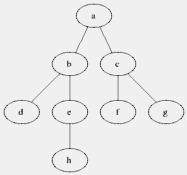Maligment Metaphor Mixing
Thursday, October 1st, 2009 - 3:56 pm - CodeClarity
Recently I was reading a book on algorithms and I had trouble understanding some example code. They were discussing breadth first traversal of a tree. Like the basic flood-fill algorithm, it is straightforward to implement with a FIFO queue. When it comes to linear ordered data there are at least three naming conventions for type and methodes: Vertical e.g.
So the lessons learned, again, were to never mix metaphors and to always refactor mixtures in given-code.
stack_t with push(), pop(); Horizontal e.g., queue_t with enqueue(), dequeue(); and Gyved e.g., list_t with putHead(), putTail(), getHead(), getTail(). You should not push down on a queue or dequeue from a stack, that is confusing. This was, however, exactly what happend in the book. It used a standard C++ library template called queue that has push() and pop() methods. To add insult to injury, the authors used the the name stack for their queue object. This made things far worse, because now there was one line of code that turned the whole interpretation 90°. I glossed over the code and started to wonder (wrongfully) why they were using a LIFO stack, turning the example in a depth first traversal. Only after re-reading some text and re-examining the code, did I spot the definition of stack as a queue: “queue<node> stack;.” Note that the C++ queue template uses push() and pop() but any underlying containers have to implement the oxymora push_back() and pop_front(). This was a very clear and short example. Imagine doing something like that in a real-life application.So the lessons learned, again, were to never mix metaphors and to always refactor mixtures in given-code.
